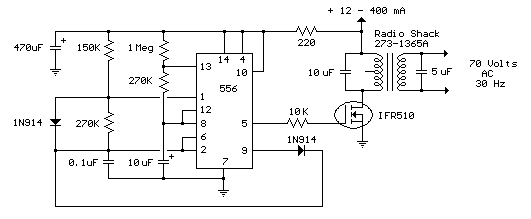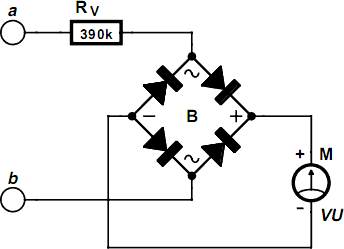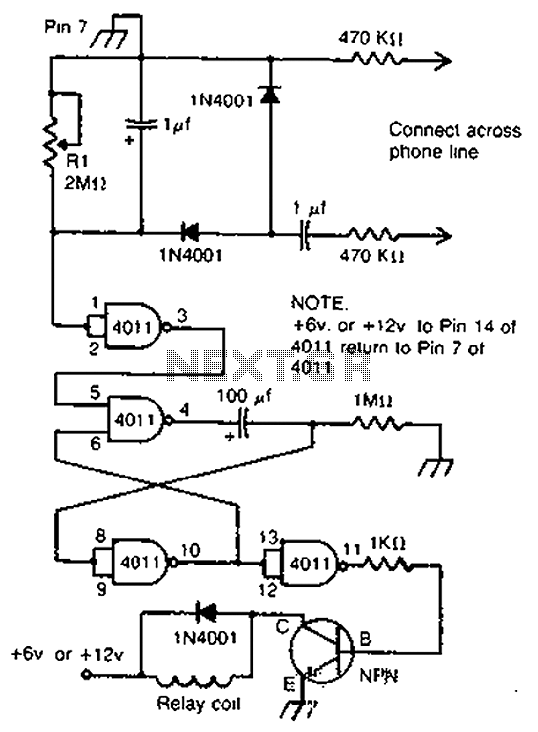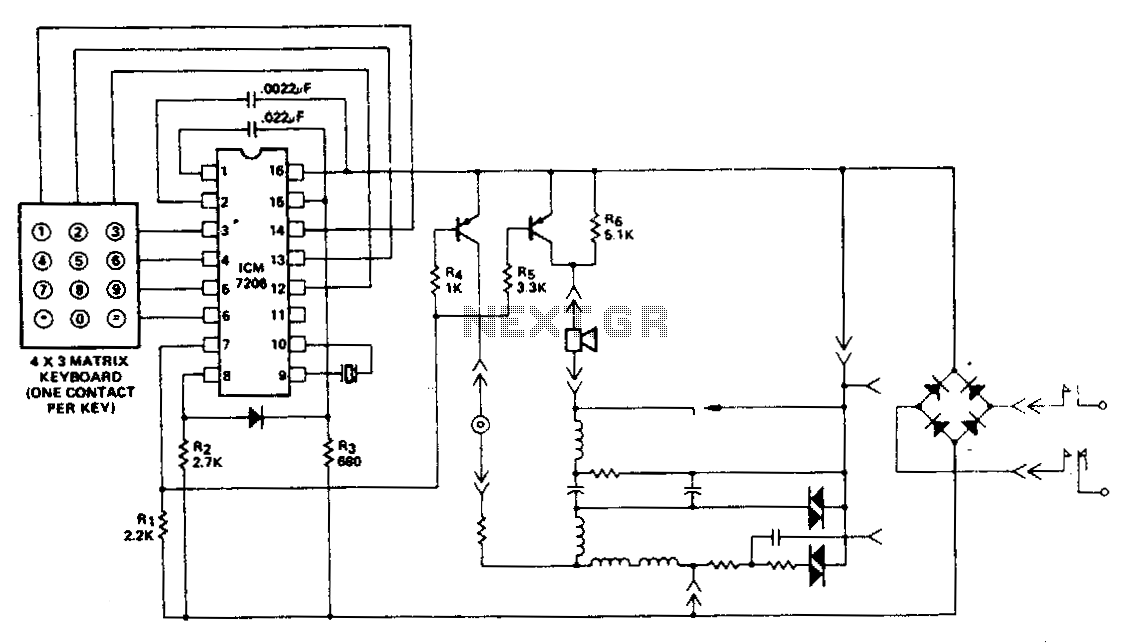
Old G.P.O. Telephone
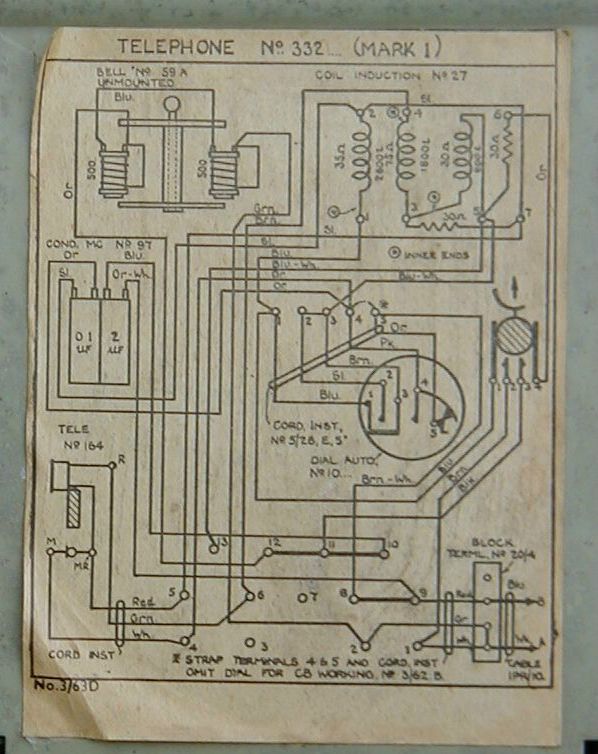
The induction coil is a component of the anti-sidetone circuit. It couples audio to the receiver and reduces the volume of the caller's own voice in the earpiece, which would otherwise be excessively loud compared to the incoming audio from the distant end. The original handset cord (top terminals) features a distinctly brown braid, while the line cord (bottom terminals) has a more purple color. This cord is a length of old-style twin lighting flex, likely from the 1950s. Although it is not an exact match, it was deemed preferable to modern PVC. The schematic indicates that the original cord was a 3-wire type; however, on a regular single-party line, the bell return was typically strapped to one side of the line at the wall junction. Observing the terminals on the underside of the chassis reveals that the wire has been extended from the bottom left terminal to the one directly above it to enable the bell to function. This is where the third wire would have been originally connected, as can be compared with the "official" straps on the terminals to the right. The mention of a 1/4-inch jack refers to the connection type used. While most single phones in homes were hardwired during the time this set was commonly used, those on a portable plan would have utilized such a jack. The old GPO jacks are considered superior to modern modular BT plugs, although contemporary manufacturing often prioritizes cost over quality. Modifying a 332 to operate with modern phone jacks is relatively straightforward, albeit technically illegal. This involves removing strap 10-11 and connecting the bell wire, typically the blue one, to terminal number 11, while keeping the line pair in their original positions. This configuration allows the capacitor in the phone jack to replace the 2 microfarad capacitor. Compliance with BS standards has varied over time, with current practices leaning toward North American equipment, including the use of ADSL microfilters and RJ11 jacks instead of BT types. The quality of old jacks, such as the 316 switchboard plugs, is noted for being exceptionally well-made compared to modern standards. The rotary dials used in these phones consist of two switches: one that is open at idle and closes when the dial is turned, and another that is closed at idle and opens while the dial spins back, generating the dial pulses. The technical term for a rotary dial is "number switch," while the more familiar term is "dial disc." Common issues with these phones include faulty microphones and broken handset cords.
The induction coil within the anti-sidetone circuit plays a crucial role in ensuring clear communication by managing audio levels. It effectively couples the audio signal to the receiver while simultaneously attenuating the caller's voice, preventing it from overpowering incoming audio. The choice of materials for the handset and line cords reflects a historical preference for durability and quality, as seen in the use of a brown braided cord for the handset and a purple twin lighting flex for the line cord, indicative of mid-20th century design practices.
In terms of functionality, the original three-wire configuration allows for a more versatile connection, particularly in single-party line setups where the bell return is strategically connected to minimize interference. The modification of the 332 model to accommodate modern jacks illustrates the adaptability of these devices, even as regulatory standards evolve. The transition from traditional GPO jacks to contemporary modular plugs highlights a broader trend in telecommunications toward cost-efficiency, often at the expense of build quality.
The rotary dial mechanism, characterized by its dual-switch operation, is a testament to the ingenuity of early telephone design. By generating dial pulses through mechanical movement, it facilitated user interaction with the telephone system long before the advent of digital dialing technologies. Despite the challenges associated with aging components, such as microphones and cords, the fundamental principles of operation remain relevant, underscoring the enduring legacy of these classic telecommunication devices.The induction coil forms part of the anti-sidetone circuit. It couples audio to the receiver, and also reduces the volume of the callers own voice in the earpiece, which would otherwise be loud compared to the incoming audio from the distant end. The original handset cord (top terminals) has a distinctly brown braid, while the line cord (bottom terminals) has a
more purple color. It`s actually a length of old-style twin lighting flex, probably 1950s. Not an exact match, but somebody obviously thought it better than modern PVC! If you look at the schematic, you`ll see that the original cord was a 3-wire type, although on a regular single-party line the bell return was just strapped to one side of the line on the wall junction. Look back at the terminals on the underside of the chassis, and you can see the wire has been extended from the bottom left terminal to the one directly above it to get the bell to work.
That`s where the third wire would have been connected originally (compare with the "official" straps on the terminals to the right). Yes, that`s what I meant when I said a 1/4-inch jack. And although the majority of single phones in homes were hardwired back in the days when this set was commonly used, those which were on a portable plan would have used just such a jack.
Personally, I think the old GPO jacks were far superior to the modern modular BT plugs, but of course these days everything is done on the basis of how cheaply it can be made. Actually Paul, modifying a 332 to work on modern style phone jacks is quite easy [although technically illegal].
Remove strap 10-11, and hook the bell wire which is usually the blue one these days, to terminal number 11, leaving the line pair right where they are. That way, the capacitor in the phone jack replaces the 2 microfarad cap. I don`t know how hot BT are on this anymore, they *used* to insist everything complied to BS something or other, but these days it seems pretty much standard to use north amercian equipment, with my ADSL microfilters, even down to an RJ11 jack on the filter instead of the BT type.
I see this as a good thing, we both know the US and Canadian systems are better right Speaking of old jacks, the 316 switchboard plugs are *incredibly* well made by modern standards, the things are a pleasure to connect to. Pity nothing uses 1/4 inch connectors anymore. 5 wires to the dial. ours had four, later ones only three. Our rotary dials basically consist of 2 switches. One is open at idle and closes when the dial is turned. The other one is closed in idle an opens while the dial spins back, generating the dial pulses. The correcr technical term for rotary dial was and still is "number switch". The more familiar term is "dial disc". The only common problems with those phones are faulty microphones and handset cords with broke 🔗 External reference
The induction coil within the anti-sidetone circuit plays a crucial role in ensuring clear communication by managing audio levels. It effectively couples the audio signal to the receiver while simultaneously attenuating the caller's voice, preventing it from overpowering incoming audio. The choice of materials for the handset and line cords reflects a historical preference for durability and quality, as seen in the use of a brown braided cord for the handset and a purple twin lighting flex for the line cord, indicative of mid-20th century design practices.
In terms of functionality, the original three-wire configuration allows for a more versatile connection, particularly in single-party line setups where the bell return is strategically connected to minimize interference. The modification of the 332 model to accommodate modern jacks illustrates the adaptability of these devices, even as regulatory standards evolve. The transition from traditional GPO jacks to contemporary modular plugs highlights a broader trend in telecommunications toward cost-efficiency, often at the expense of build quality.
The rotary dial mechanism, characterized by its dual-switch operation, is a testament to the ingenuity of early telephone design. By generating dial pulses through mechanical movement, it facilitated user interaction with the telephone system long before the advent of digital dialing technologies. Despite the challenges associated with aging components, such as microphones and cords, the fundamental principles of operation remain relevant, underscoring the enduring legacy of these classic telecommunication devices.The induction coil forms part of the anti-sidetone circuit. It couples audio to the receiver, and also reduces the volume of the callers own voice in the earpiece, which would otherwise be loud compared to the incoming audio from the distant end. The original handset cord (top terminals) has a distinctly brown braid, while the line cord (bottom terminals) has a
more purple color. It`s actually a length of old-style twin lighting flex, probably 1950s. Not an exact match, but somebody obviously thought it better than modern PVC! If you look at the schematic, you`ll see that the original cord was a 3-wire type, although on a regular single-party line the bell return was just strapped to one side of the line on the wall junction. Look back at the terminals on the underside of the chassis, and you can see the wire has been extended from the bottom left terminal to the one directly above it to get the bell to work.
That`s where the third wire would have been connected originally (compare with the "official" straps on the terminals to the right). Yes, that`s what I meant when I said a 1/4-inch jack. And although the majority of single phones in homes were hardwired back in the days when this set was commonly used, those which were on a portable plan would have used just such a jack.
Personally, I think the old GPO jacks were far superior to the modern modular BT plugs, but of course these days everything is done on the basis of how cheaply it can be made. Actually Paul, modifying a 332 to work on modern style phone jacks is quite easy [although technically illegal].
Remove strap 10-11, and hook the bell wire which is usually the blue one these days, to terminal number 11, leaving the line pair right where they are. That way, the capacitor in the phone jack replaces the 2 microfarad cap. I don`t know how hot BT are on this anymore, they *used* to insist everything complied to BS something or other, but these days it seems pretty much standard to use north amercian equipment, with my ADSL microfilters, even down to an RJ11 jack on the filter instead of the BT type.
I see this as a good thing, we both know the US and Canadian systems are better right Speaking of old jacks, the 316 switchboard plugs are *incredibly* well made by modern standards, the things are a pleasure to connect to. Pity nothing uses 1/4 inch connectors anymore. 5 wires to the dial. ours had four, later ones only three. Our rotary dials basically consist of 2 switches. One is open at idle and closes when the dial is turned. The other one is closed in idle an opens while the dial spins back, generating the dial pulses. The correcr technical term for rotary dial was and still is "number switch". The more familiar term is "dial disc". The only common problems with those phones are faulty microphones and handset cords with broke 🔗 External reference


